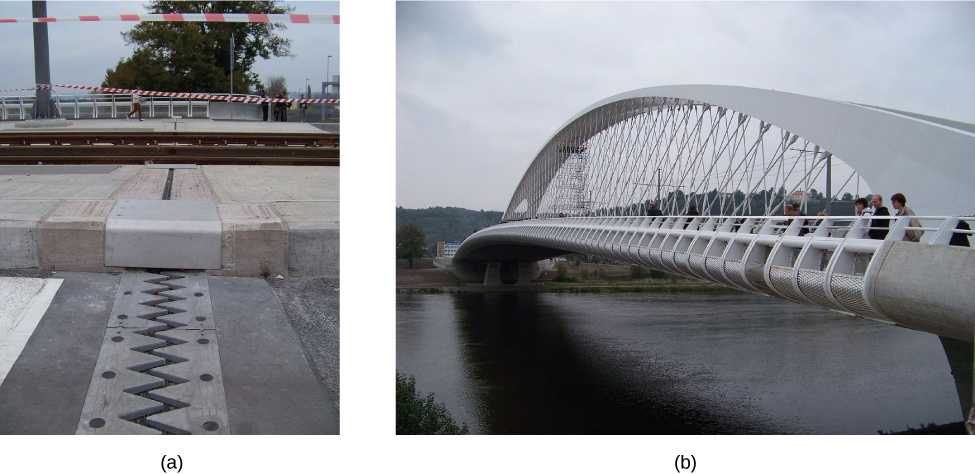| << Chapter < Page | Chapter >> Page > |
The expansion of alcohol in a thermometer is one of many commonly encountered examples of thermal expansion , which is the change in size or volume of a given system as its temperature changes. The most visible example is the expansion of hot air. When air is heated, it expands and becomes less dense than the surrounding air, which then exerts an (upward) force on the hot air and makes steam and smoke rise, hot air balloons float, and so forth. The same behavior happens in all liquids and gases, driving natural heat transfer upward in homes, oceans, and weather systems, as we will discuss in an upcoming section. Solids also undergo thermal expansion. Railroad tracks and bridges, for example, have expansion joints to allow them to freely expand and contract with temperature changes, as shown in [link] .

What is the underlying cause of thermal expansion? As previously mentioned, an increase in temperature means an increase in the kinetic energy of individual atoms. In a solid, unlike in a gas, the molecules are held in place by forces from neighboring molecules; as we saw in Oscillations , the forces can be modeled as in harmonic springs described by the Lennard-Jones potential. Energy in Simple Harmonic Motion shows that such potentials are asymmetrical in that the potential energy increases more steeply when the molecules get closer to each other than when they get farther away. Thus, at a given kinetic energy, the distance moved is greater when neighbors move away from each other than when they move toward each other. The result is that increased kinetic energy (increased temperature) increases the average distance between molecules—the substance expands.
For most substances under ordinary conditions, it is an excellent approximation that there is no preferred direction (that is, the solid is “isotropic”), and an increase in temperature increases the solid’s size by a certain fraction in each dimension. Therefore, if the solid is free to expand or contract, its proportions stay the same; only its overall size changes.
According to experiments, the dependence of thermal expansion on temperature, substance, and original length is summarized in the equation
where is the original length, is the change in length with respect to temperature, and is the coefficient of linear expansion , a material property that varies slightly with temperature. As is nearly constant and also very small, for practical purposes, we use the linear approximation:
[link] lists representative values of the coefficient of linear expansion. As noted earlier, is the same whether it is expressed in units of degrees Celsius or kelvins; thus, may have units of or 1/K with the same value in either case. Approximating as a constant is quite accurate for small changes in temperature and sufficient for most practical purposes, even for large changes in temperature. We examine this approximation more closely in the next example.

Notification Switch
Would you like to follow the 'University physics volume 2' conversation and receive update notifications?